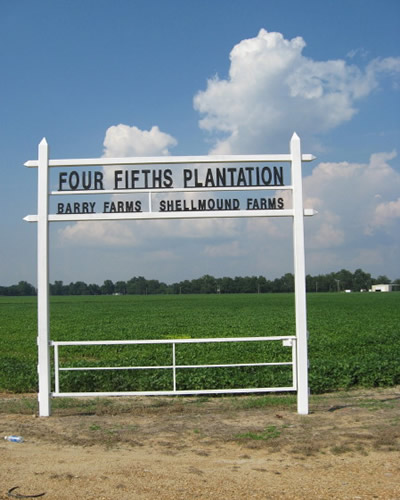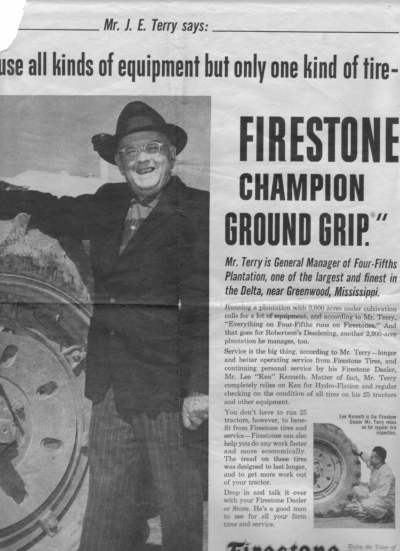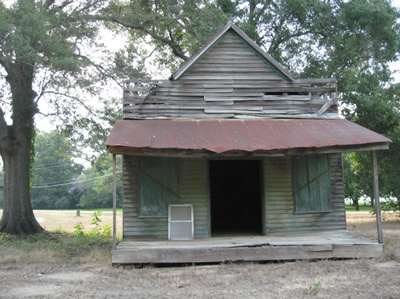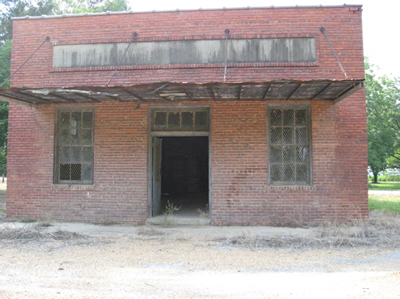
I’d like to believe my Mississippi forebears were too poor to own anyone and too far down the Antebellum social ladder to oversee plantations. That’s not the way it’s been presented, but, as a Mississippian once told me, “Delta Aristocracy is redundant. Completely. They all think they’re aristocracy, even the trailer park occupants.” So I’ve got a lot of research left to do.
This summer I dragged my beloved Aunt L. through the Mississippi Delta. On the way we stopped in Memphis to visit my great aunt and uncle, both in their 80s, who told us which little church in Acona to stop at and where exactly we would find Four-Fifths plantation, which my great-grandfather managed in the ’40s and ’50s.
Great Aunt E. waved her hand magisterially around her apartment, which is filled with lovely things she’s picked up on her travels. Trees etched of jade. Delicate porcelain bunnies. Crystal and china, all perfectly arranged. “Well, you know,” she said, in an accent that makes Eudora Welty sound like a Yankee, “it’s not popular anymore to have a plantation in your background.”
A thousand sarcastic rejoinders leapt to mind, but I bit them back. The woman is 86 years old. She’s recovering from a mastectomy. What’s the point?
As we drove down into the Delta, Aunt L. helped me differentiate between the cotton crops and the soybeans. The corn, a newly viable crop down there with the advent of biofuel, was easier to pick out. Everywhere there were deteriorating shacks and rusted-out cars and overgrown lots. The slow gentrification of downtown Greenwood and blues hot spots of Clarksdale notwithstanding, the Delta remains shockingly poor. And man, it is hot. Hot and dusty and — despite the lush green of the fields and the trees beyond them — grim.
I’ll be honest: I went on the trip partly to figure out my dad’s family. I didn’t find out much. Why I have this urge to know about my ancestors, I don’t know fully yet, but I guess I feel that it will explain something about my parents and me and my sister. Maybe that’s why, standing out in front of the Four-Fifths sign, I felt so implicated.
The man in the Firestone ad below is my great-grandfather, Daddy Joe. Below that are two buildings still on the plantation site; Aunt L. thinks the top one was Daddy Joe’s office, and the other was a convenience store.


